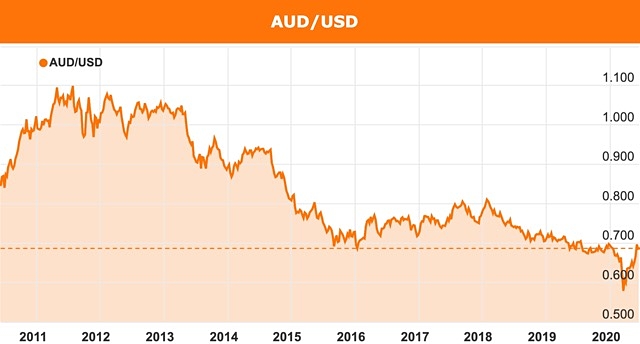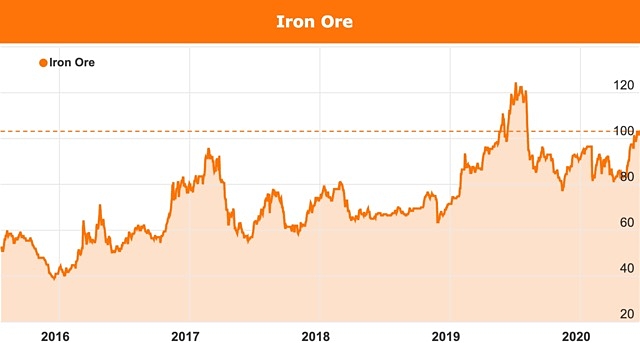Why trade peace is about to break out between China and Australia

Trade tensions have flared between China and Australia in recent months, however that may soon change.
If you believe all of the news about the emerging trade war between China and Australia, you could be forgiven for thinking that the two countries are on the edge of a precipice.
Just one wrong move and Australia’s biggest trading partner could simply walk away and do business with other countries, leaving Australia in one heck of an economic mess.
The reality of the situation is quite different and that we may be about to see peace break out between the two countries, with the COVID-19 pandemic the major driver towards better relations.
Brazil hit hard by COVID-19
The major reason for the change is that Brazil has become one of the hardest hit nations on earth with the virus, which is significantly hurting its ability to export iron ore to China.
At the same time China is pulling every lever it can to stimulate its economy into stronger economic growth, which in simple terms means it needs to ramp up iron ore imports to produce more steel.
You can see the result of this dynamic by following the price of iron ore, which has risen around 25% at the same time as many other commodities and particularly oil have been heading in the opposite direction.
Those iron ore price moves have also been reflected in a significant strengthening in the Australian dollar.
Iron ore and Aussie dollar heading higher
Westpac chief economist Bill Evans now believes the dollar is heading towards US72c by the end of this year and as high as US76c by the end of 2021.
Over the last month the Australian dollar has risen from around the US65c level to as high as US70c, before moderating to around US68c now.

There is a lot of scepticism about Brazil’s ability to bring the virus under control while at the same time China seems very determined to do all that it can to push economic growth higher by promoting more construction activity for the rest of 2020 and into 2021.
Australia and China locked at the hip
In very simple terms, this means that Australia and China are even more locked at the hip than normal in economic terms.
China needs unfettered access to high quality Australian seaborne iron ore and Australia is ready to supply that need, with the investments of the mining boom now bearing fruit in higher production capacities across a range of minerals, including iron ore.
In that context, we need to see some of the sabre rattling including 80.5% Chinese tariffs on Australian barley and warnings that Chinese students and tourists should not keep coming to Australia as carefully targeted actions from a newly assertive China rather than signs of a full-blown trade war.
Similarly, Australia and particularly Prime Minister Scott Morrison has learned a lesson that it can’t be seen to be instigating action against China for the global pandemic – it makes sense for us to wait and join a consensus of countries rather than to be seen to be doing the dirty work on behalf of the US.
Higher iron ore price and dollar has consequences
One thing we should remember though is that there are some negative ramifications of a higher iron ore price and resultant higher Australian dollar.
It is fairly recent history during the mining boom that both measures remained elevated and while strong exports can be a great help for the country, it can also cause issues such as weakening economic growth.

Back in 2009/2010 when the Australian dollar and iron ore prices were both high, the Reserve Bank was shocked when the lift in incomes from the booming terms of trade leaked into savings rather than spending.
At the same time as local demand weakened, the high dollar put downward pressure on inflation and growth.
Households keen to save and pay down debt
That effect could be even stronger this time around with unemployment higher due to the effects of the COVID-19 shutdown and household budgets stretched and heavily in debt.
It would be no surprise to see any windfall gains being churned into debt reduction and/or savings in such an uncertain economic environment.
International travel restrictions will also drag down demand given Australia’s significant reliance on tourism and international students.
Stimulus can only do so much to provoke growth
While the Reserve Bank will keep interest rates very low for the foreseeable future and the estimated US$9 trillion of global government spending stimulus will be pushing hard towards greater growth, that may initially be felt more in continued asset price growth rather than higher GDP.
That will be a challenge for the RBA, which has now admitted it is unlikely to hits its targets of full employment and 2–3% inflation by the end of its public forecasting horizon of June 2022.
It is also one of the reasons why Westpac’s chief economist Bill Evans believes that there is a possibility of negative interest rates in Australia.
Negative interest rate still a possibility
Negative rates would probably reduce the level of the Australian dollar and help to increase growth, inflation and employment at a time when businesses that survive the shutdowns could be closing.
It is an interesting argument and while the RBA is currently resisting negative interest rates, there is probably more chance of negative rates happening than a full-on trade war between China and Australia.
In simple terms, the two countries need each other too much to pull the trigger on a trade war.
They will certainly continue to have their differences but both will have learned from the current skirmishes and both need to rekindle economic growth more than they need to fight over ideology.
